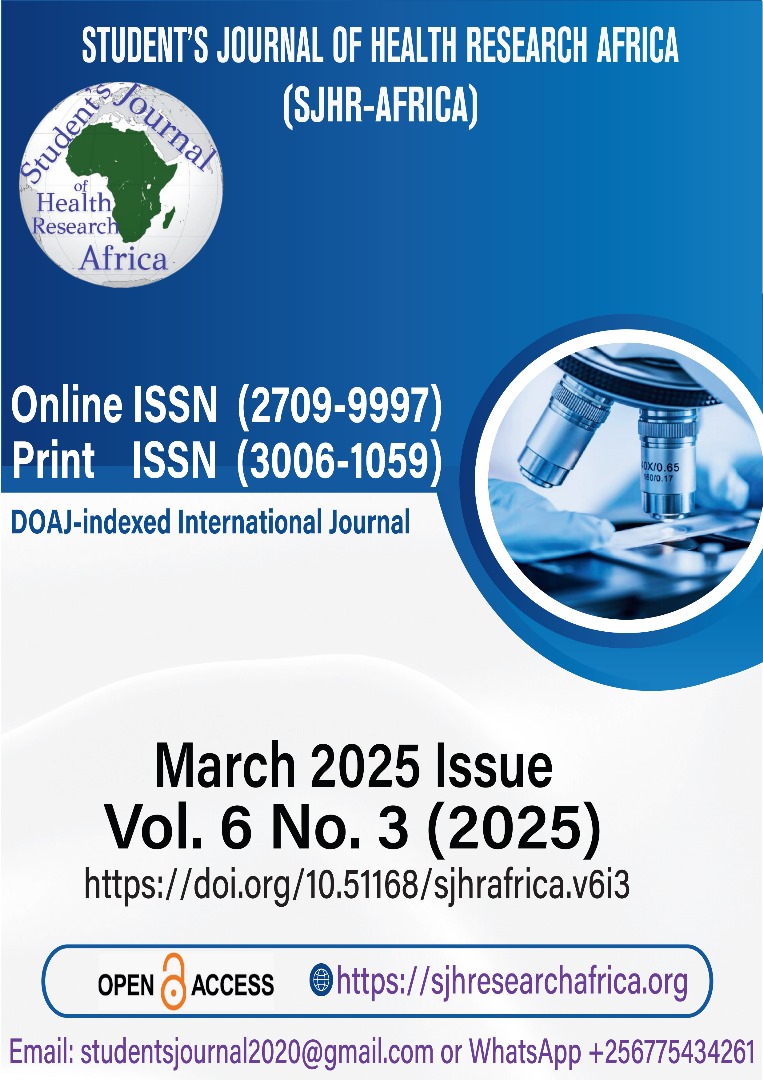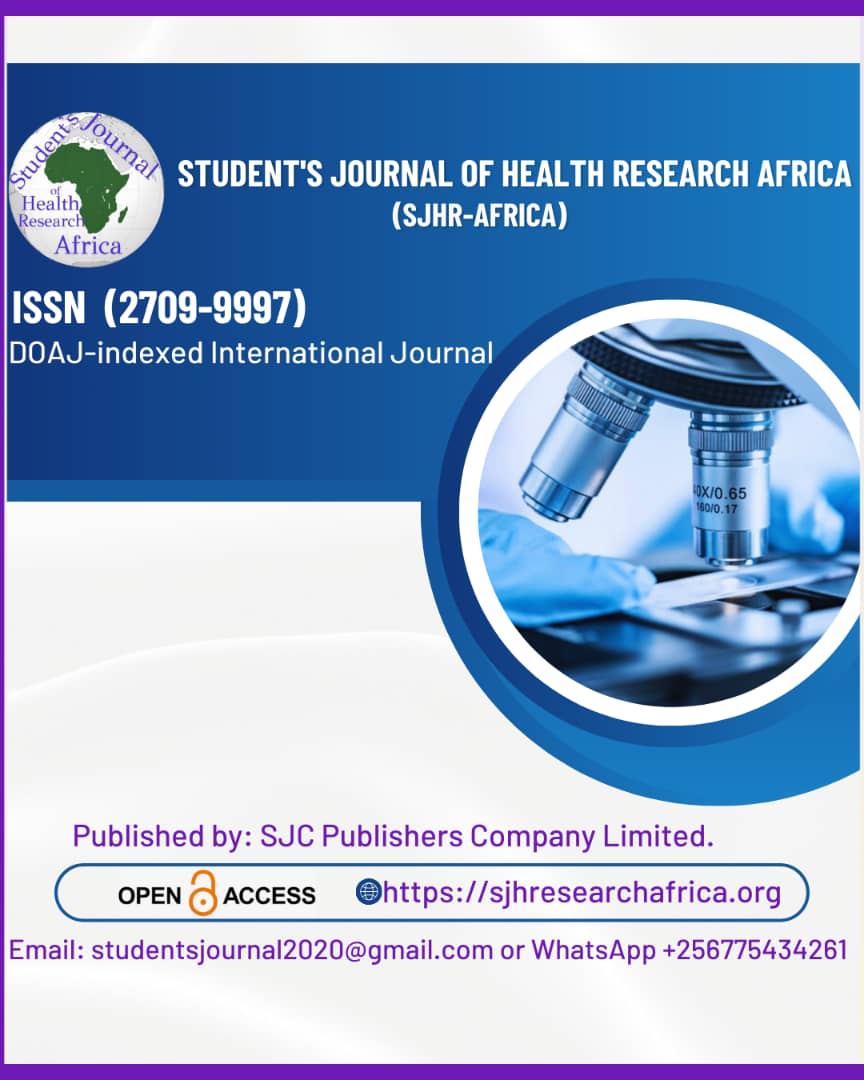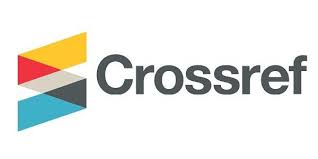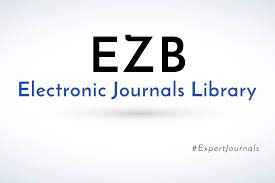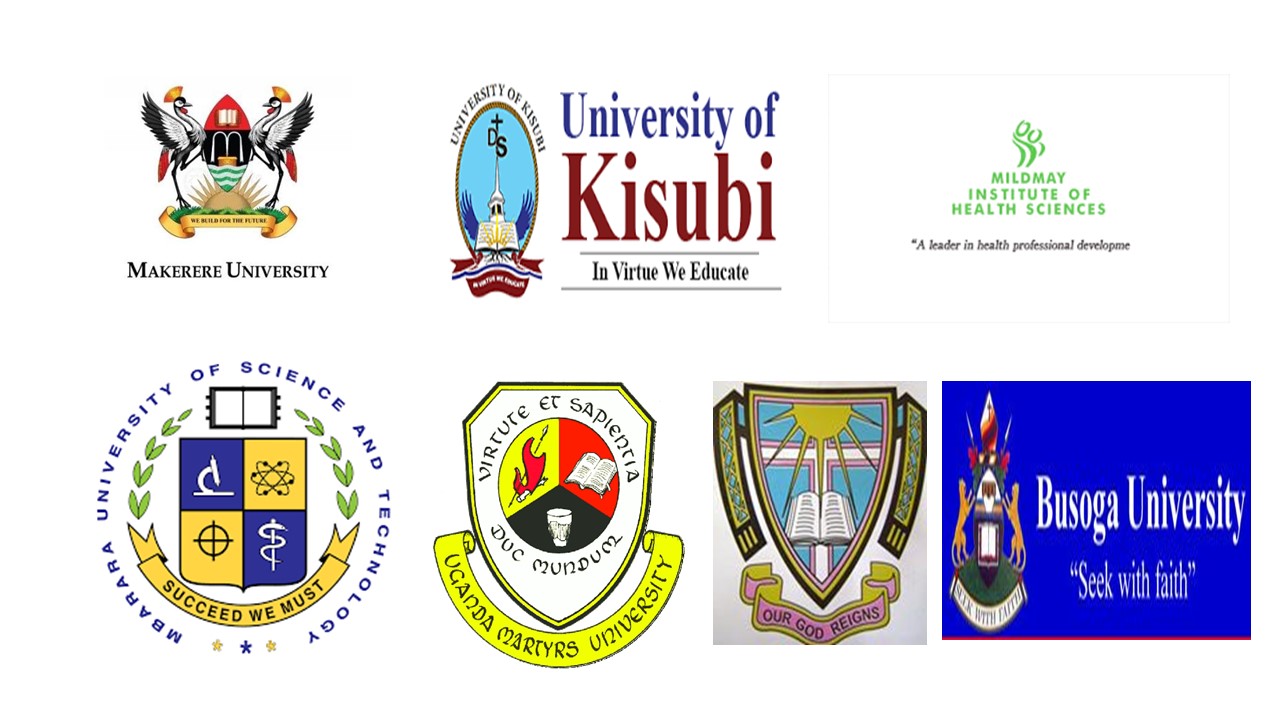Microfinance Credit and Financial Performance of Small and Medium Enterprises in Wakiso Town Council, Wakiso District
DOI:
https://doi.org/10.51168/sjhrafrica.v6i3.1697Keywords:
Microfinance credit, Financial performance, Small and Medium Enterprises (SMEs), Microloans, Loan terms, Borrowing frequency, Wakiso Town CouncilAbstract
Background
Despite widespread access to microfinance services in Wakiso Town Council (WTC), over 73% of Small and Medium Enterprises (SMEs) report poor financial performance. This study investigated the relationship between microfinance credit and SME financial performance in WTC, Wakiso District, Uganda.
Methods
A cross-sectional design was used to collect primary data from 277 SMEs using structured questionnaires, supplemented with secondary data from WTC financial records. Financial performance was assessed through profitability (ROA), liquidity, and solvency indicators. Pearson correlation and regression analysis were conducted using SPSS v29.
Results
Most SMEs (57.8%) had been operational for less than 5 years, and 61.7% relied on microfinance institutions for funding. Correlation analysis showed a weak negative association between access to microloans and profitability (r = -0.128, p = 0.033), but a positive correlation between effective use of microloans and profitability (r = 0.181, p = 0.003). Satisfaction with loan terms showed a negative correlation with profitability (r = -0.124, p = 0.039). High borrowing frequency was positively associated with improved solvency (r = 0.122, p = 0.043). Regression analysis revealed that microfinance credit variables accounted for 7.7% of the variance in SME financial performance (R² = 0.077, F(8, 268) = 2.783, p = 0.006).
Conclusion
Access to microloans alone does not significantly enhance SME profitability in WTC. Overborrowing and rigid loan conditions may undermine benefits. Effective loan utilization and tailored financial literacy interventions are essential to strengthen SME financial performance.
Recommendations
Stakeholders should revise loan structures to include flexible terms, monitor credit use, and implement financial literacy programs to help SMEs maximize microfinance benefits.
References
Krejcie RV, Morgan DW. Determining sample size for research activities. Educ Psychol Meas. 1970;30(3):607–610.
SPSS Inc. IBM SPSS Statistics for Windows, Version 29.0.2.0. Chicago, IL: IBM Corp; 2022.
Ledgerwood J. The new microfinance handbook: A financial market system perspective. Washington, DC: World Bank Publications; 2013.
Beck T, Demirgüç-Kunt A, Levine R. SMEs, growth, and poverty: Cross-country evidence. J Econ Growth. 2005;10(3):199–229.
Okioc FR, Kiwanuka M. Loan access and financial performance of SMEs in Uganda. Afr J Bus Manag. 2020;14(5):150–158.
Basheka BC, Tumutegyereize M. The role of microfinance institutions on the growth of small and medium enterprises in Uganda. Int J Finance Manag. 2018;3(2):45–58.
World Bank. Microfinance and small business growth in Africa [Internet]. Washington, DC: World Bank; 2020 [cited 2025 Apr 10]. Available from: https://www.worldbank.org/
Downloads
Published
How to Cite
Issue
Section
License
Copyright (c) 2025 Maureen Kantono, Dr. Nsambu Kijjambu Frederick (PhD)

This work is licensed under a Creative Commons Attribution-NonCommercial-NoDerivatives 4.0 International License.

